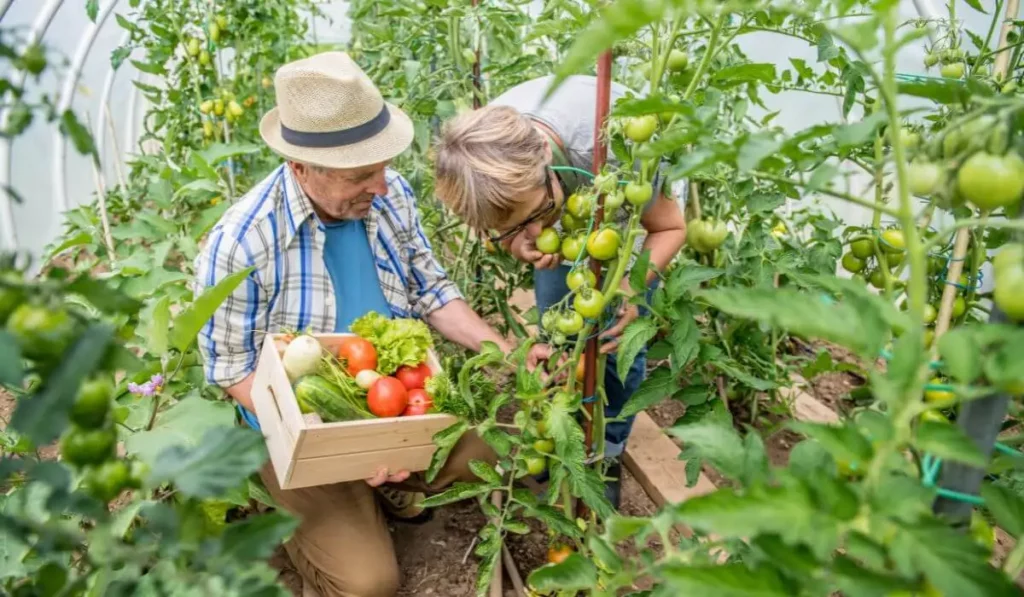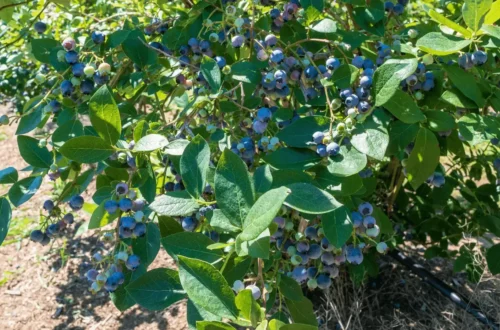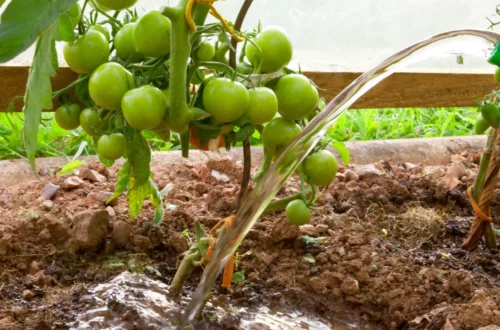A Complete Guide to Year-Round Vegetable Gardening: 10 Steps for Success

Are you tired of relying on the grocery store for your vegetable supply? Imagine having a garden that provides you with a continuous bounty of fresh, flavorful vegetables all year round. With a little planning and know-how, you can turn this dream into a reality.
Growing your own vegetable garden has numerous benefits – from saving money and enjoying the satisfaction of eating homegrown produce to reducing your carbon footprint. But where do you start? How do you ensure success throughout the year?
Don’t worry, we’ve got you covered. In this guide, we’ll walk you through the ten essential steps to create a flourishing year-round garden. We’ll cover everything from planning and preparation to planting, maintenance, and harvesting. Get ready to dig in and discover the secrets behind a bountiful vegetable garden that will make your taste buds sing. Let’s get gardening!
Introduction to Year-Round Vegetable Gardening
Growing a vegetable garden that can be enjoyed throughout the year is a rewarding endeavor that brings a range of benefits. Not only does it provide a steady supply of fresh and nutritious produce, but it also offers the satisfaction of cultivating your own food. By following the steps outlined in this guide, you can establish a garden that yields a continuous bounty of vegetables in every season.
One of the primary advantages of year-round vegetable gardening is that it allows you to enjoy the flavors and nutritional benefits of freshly harvested produce. Instead of relying solely on store-bought vegetables that may have been harvested weeks ago, you can pluck ripe tomatoes, crisp lettuce, and vibrant bell peppers from your own backyard. The taste and quality of homegrown vegetables are unmatched, as they are picked at the peak of ripeness and brought directly from the garden to your table.
In addition to the culinary satisfaction, growing a year-round vegetable garden also promotes self-sufficiency and sustainability. By reducing your reliance on store-bought produce, you can lower your carbon footprint and contribute to a more environmentally friendly lifestyle. Furthermore, cultivating your own vegetables allows you to have control over the use of pesticides and fertilizers, giving you the option to grow your produce organically and promote healthier eating habits.
Another benefit of year-round vegetable gardening is the cost savings it can provide. While initial setup costs may be involved, the ongoing expenses will be significantly reduced compared to consistently purchasing fresh vegetables. With a well-maintained garden, you can produce an abundance of vegetables that will supplement your meals and save you money in the long run.
Moreover, tending to a vegetable garden offers numerous mental and physical health benefits. Gardening is known to reduce stress, improve mood, and increase overall well-being. It provides an opportunity for physical activity, allowing you to spend time outdoors and engage in a rewarding and therapeutic hobby. The sense of accomplishment and connection to nature that comes with successfully growing your own vegetables can greatly contribute to a positive mindset.
With these advantages in mind, the following steps will guide you through the process of creating and maintaining a year-round vegetable garden. From planning and preparation to ongoing care and prolonging the growing season, this comprehensive guide will equip you with the knowledge and skills needed to enjoy a continual supply of fresh, flavorful, and nutrient-rich vegetables throughout the year.
Step 1: Planning Your Year-Round Garden
Proper planning is essential for a successful year-round vegetable garden. By selecting suitable vegetable varieties and creating a planting schedule, you can ensure a bountiful harvest throughout the year.
To start, consider the climate conditions in your area and the specific needs of each vegetable. Choose varieties that are well-suited to your region’s temperature and growing season length. Utilize resources such as local planting guides or consult with your cooperative extension office for the best recommendations.
Additionally, create a planting schedule that takes into account the ideal planting times for each vegetable. Some plants thrive in cool weather, while others prefer warmer temperatures. By staggering your plantings, you can enjoy a continuous supply of fresh produce.
Remember, careful planning sets the foundation for a successful garden that will provide you with a diverse and delicious harvest all year long.
Step 2: Preparing the Soil
Preparing the soil is a crucial step in setting the foundation for a successful year-round vegetable garden. Optimal soil conditions help promote healthy plant growth and maximize productivity. Here are some tips for preparing your soil:

1. Clear the Area
Remove any weeds, rocks, or debris from the designated garden area. This ensures a clean and clear space for your vegetable plants to thrive.
2. Test the Soil
Conduct a soil test to assess its pH level and nutrient content. This will help determine if any amendments are needed to create a nutrient-rich environment for your plants.
3. Add Organic Matter
Incorporate generous amounts of organic matter, such as compost or well-rotted manure, into the soil. This improves its structure, enhances drainage, and provides essential nutrients for plant growth.
4. Dig and Till
Use a garden fork or tiller to gently dig and till the soil. This helps loosen compacted soil, improves aeration, and promotes root development.
5. Level and Smooth
After tilling, level the soil surface with a rake, ensuring it’s smooth and even. This provides a uniform planting bed and helps with water distribution.
By following these steps, you’ll create a nutrient-rich and well-prepared soil that sets the stage for healthy plant growth and a bountiful harvest throughout the year.
Step 3: Starting Seeds or Transplanting Seedlings
Starting seeds or transplanting seedlings is a crucial step in the year-round vegetable gardening process. There are two main options for getting your plants into the garden: starting seeds from scratch or transplanting ready-made seedlings.
If you choose to start seeds, you can either sow them directly into the soil or start them indoors. Starting seeds indoors allows you to get a head start on the growing season and gives you more control over environmental conditions.
Transplanting seedlings, on the other hand, involves purchasing young plants from a local nursery or starting your own in seed trays. This method saves time and ensures a more consistent and successful start for your vegetable garden.
Whichever option you choose, timing is crucial. It’s important to consult a local planting guide or cooperative extension office to determine the proper time to start seeds or transplant seedlings in your specific area. By starting seeds or transplanting seedlings at the right time, you give your plants a better chance of thriving and producing a bountiful harvest.
Remember, successful vegetable gardening starts with healthy and robust plants, so take the time to establish a strong foundation by starting seeds or transplanting seedlings at the appropriate time and providing them with the necessary care and attention.
Also read: A Comprehensive Guide to Organic Gardening for Newbies
Step 4: Providing Adequate Watering
Proper watering is essential for the health and productivity of your year-round vegetable garden. Different seasons and varying water needs of different vegetables require careful attention to ensure optimal growth. Here are some tips to help you provide adequate watering for your vegetable plants:

1. Understand Your Plants’ Water Needs
Different vegetables have varying water requirements. Research the specific watering needs of each vegetable variety you are growing. Some vegetables, like lettuce and tomatoes, prefer consistent moisture, while others, such as peppers and melons, can tolerate drier conditions.
2. Monitor Soil Moisture
Regularly check the moisture level of the soil to determine when to water. Stick your finger about an inch deep into the soil. If it feels dry, it’s time to water.
3. Water Deeply and Infrequently
When watering, aim for deep penetration to encourage healthy root development. Avoid shallow, frequent watering, as it promotes shallow root growth and increases the risk of stress during dry periods.
4. Consider Time of Day
Water your vegetable garden early in the morning or late in the evening to minimize evaporation. This allows plants to absorb water more efficiently and reduces the risk of diseases caused by prolonged leaf wetness.
5. Use Mulch
Apply a layer of organic mulch, such as straw or wood chips, around your plants. Mulch helps retain soil moisture, reduces water evaporation, and suppresses weed growth.
6. Implement Drip Irrigation or Soaker Hoses
Consider using drip irrigation or soaker hoses to deliver water directly to the soil near the plant roots. This method reduces water waste by avoiding runoff and helps prevent fungal diseases by keeping foliage dry.
7. Observe and Adjust
Pay attention to your plants’ appearance. Wilting or yellowing leaves may indicate inadequate watering, while excessively damp soil could signal overwatering. Adjust your watering routine accordingly.
Remember, the goal is to maintain consistent soil moisture without waterlogging or drying out your plants. By following these watering tips, you’ll help ensure the health and productivity of your year-round vegetable garden.
Step 5: Managing Garden Pests and Diseases
One of the challenges that vegetable gardeners face is dealing with pests and diseases that can harm their plants. However, by implementing effective strategies, you can prevent and manage these issues, ensuring the health and productivity of your garden.
1. Identify Common Pests and Diseases
Learn to recognize common garden pests like aphids, snails, and caterpillars, as well as diseases such as powdery mildew and bacterial spot. This knowledge will help you take prompt action when needed.
2. Practice Good Garden Hygiene
Maintain a clean and tidy garden by removing weeds and debris that can harbor pests and diseases. Regularly inspect your plants for any signs of infestation or infection.
3. Encourage Beneficial Insects
Attract beneficial insects like ladybugs, lacewings, and bees to your garden by planting flowers and herbs that provide them with nectar and pollen. These insects can help control pest populations naturally.
4. Use Organic Pest Control Methods
Opt for organic pest control methods, such as handpicking pests, applying insecticidal soaps or oils, or using natural predators like nematodes or birds. These methods minimize the use of harmful chemicals and ensure the safety of your produce.
5. Rotate Crops Regularly
Practicing crop rotation can help prevent the buildup of pests and diseases in your garden. By moving different plant families to different areas each year, you disrupt their life cycles, reducing the risk of infestation or infection.
6. Monitor and Respond Promptly
Regularly inspect your plants for any signs of pest damage or disease symptoms. If you notice anything unusual, take immediate action to address the issue. This can include removing infected plants, applying targeted treatments, or seeking advice from a gardening expert.
7. Keep Plants Healthy
Healthy plants are more resilient against pests and diseases. Ensure your plants receive proper nutrition, sufficient water, and adequate sunlight. Avoid over-fertilizing, as it can attract pests and weaken plants.
Remember, a combination of preventive measures and vigilant monitoring is key to managing pests and diseases in your vegetable garden. By staying proactive, you can protect your plants and enjoy a bountiful harvest.
Step 6: Fertilizing for Healthy Growth
Fertilizing your vegetable garden is essential for promoting healthy plant growth and ensuring bountiful harvests. When it comes to fertilizers, opting for organic options is a sustainable and eco-friendly choice. Organic fertilizers, such as composted manure or compost, provide a rich source of nutrients that nourish your plants naturally. Additionally, incorporating organic matter into the soil improves its structure and fertility, enhancing root development and nutrient uptake. Apply the fertilizer according to the instructions on the package, ensuring proper depth and avoiding direct contact with the plant stems to prevent burning. Remember, a well-fertilized garden leads to stronger, more productive plants and a more abundant crop.
Step 7: Implementing Crop Rotation
Implementing crop rotation in your vegetable garden is crucial to prevent pests and nutrient depletion. By rotating your crops, you disrupt the life cycles of pests, reducing the risk of infestations. Additionally, different crops have varying nutrient requirements, and rotating them ensures that the soil remains balanced and fertile. Start by dividing your garden into different sections or beds, and each year, move the crops to a new location. This practice not only promotes healthier plants but also leads to more bountiful and successful harvests.
Step 8: Maintaining Proper Plant Spacing
When it comes to successful year-round vegetable gardening, maintaining proper plant spacing is crucial for optimal growth and airflow. Adequate spacing between plants helps prevent overcrowding, which can lead to poor air circulation, increased susceptibility to diseases, and competition for nutrients.
Here are some key considerations for maintaining proper plant spacing in your garden:
1. Follow the spacing recommendations provided on the seed packet or by your local nursery or cooperative extension office.
2. Give each vegetable plant enough room for its roots to spread and grow.
3. Create pathways between rows for easy access and maintenance.
4. Regularly thin out seedlings to ensure adequate spacing as they establish themselves.
Remember, proper plant spacing not only promotes healthy growth but also allows for easier cultivation, pest control, and harvesting throughout the year.
Step 9: Continual Maintenance and Harvesting
To ensure a thriving year-round vegetable garden, ongoing maintenance is crucial. Here are some essential tips for keeping your garden in great shape and maximizing your harvest:
1. Weeding
Regularly remove weeds to prevent competition for nutrients and space. Use a hand tool or carefully pull them by hand, ensuring you remove the entire root system.
2. Pruning
Trim back overgrown or damaged plant parts to promote healthy growth. Remove any dead or diseased leaves or branches as well.
3. Harvesting
Harvest vegetables when they are ripe, following the specific guidelines for each variety. This not only provides you with fresh produce but also encourages the plants to continue producing.
Remember, maintenance and harvesting go hand in hand to ensure a bountiful and productive year-round vegetable garden.
Step 10: Extending the Growing Season
To ensure a continuous supply of fresh vegetables throughout the year, it’s important to extend your growing season. This can be achieved by utilizing various techniques and tools, such as season extenders and cold frames. Here are some effective methods:
1. Season Extenders
– Use row covers: These lightweight fabrics can protect your plants from frost and keep them warm during cold nights.
– Consider hoop houses: These structures provide insulation and shelter for your crops, allowing them to thrive even in chilly temperatures.
– Use cloches: These individual protective covers can be placed over plants to create a microclimate that promotes growth.
2. Cold Frames
– Build a cold frame: Construct a simple structure with a transparent cover that allows sunlight in and traps heat, creating a warmer environment for your plants.
– Utilize existing structures: Place plants near south-facing walls or structures that absorb heat during the day and release it at night.
By implementing these techniques, you can enjoy an extended growing season and continue harvesting fresh vegetables for a longer period.
Also read: How to Grow a Sustainable Garden: A Beginner’s Guide
Conclusion
Growing a year-round vegetable garden is a rewarding and sustainable endeavor that allows you to enjoy fresh and nutritious produce throughout the year. By following the 10 steps outlined in this guide, you can create a garden that thrives in every season, providing you with a continuous bounty of flavorful and nutrient-rich vegetables.





